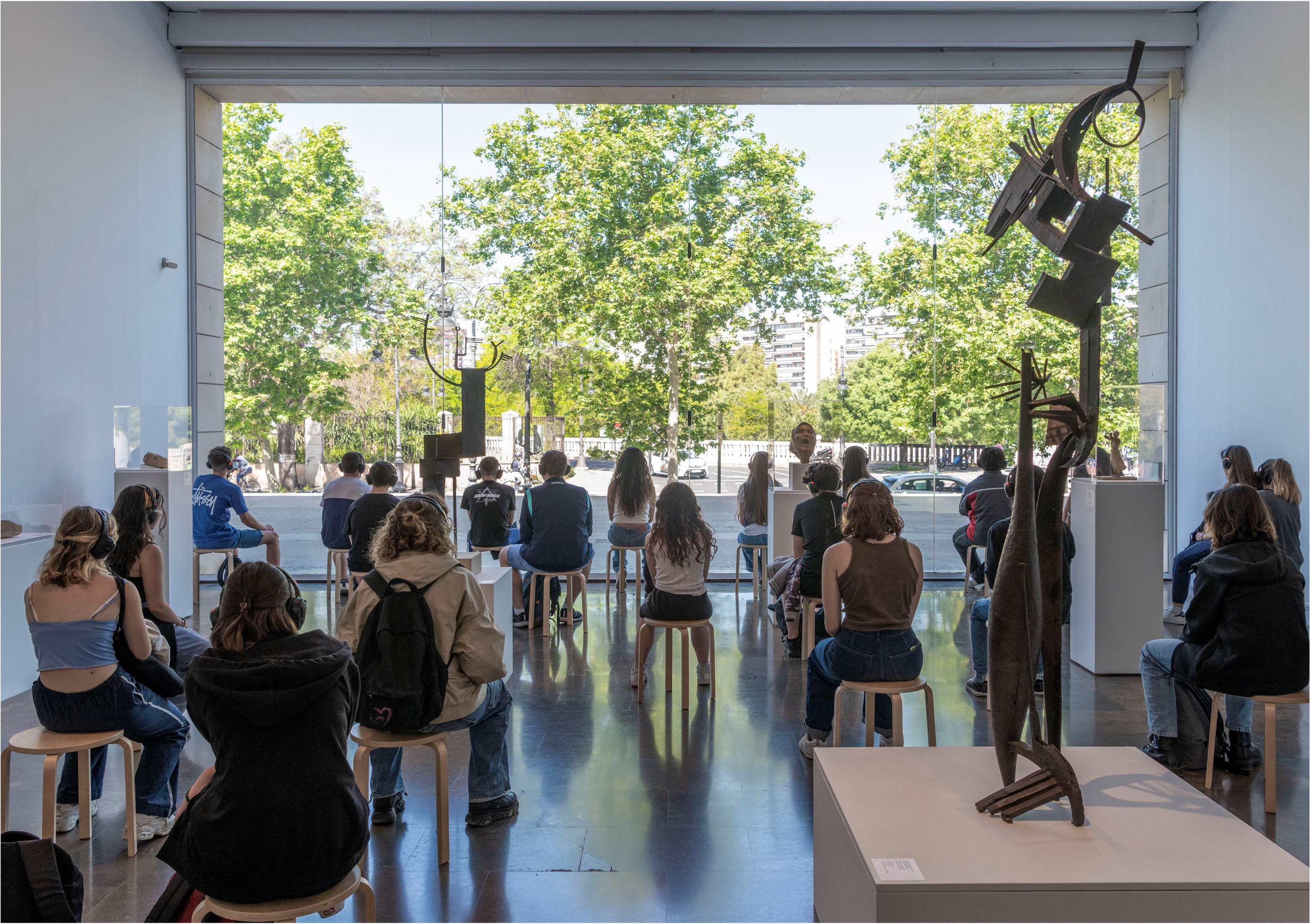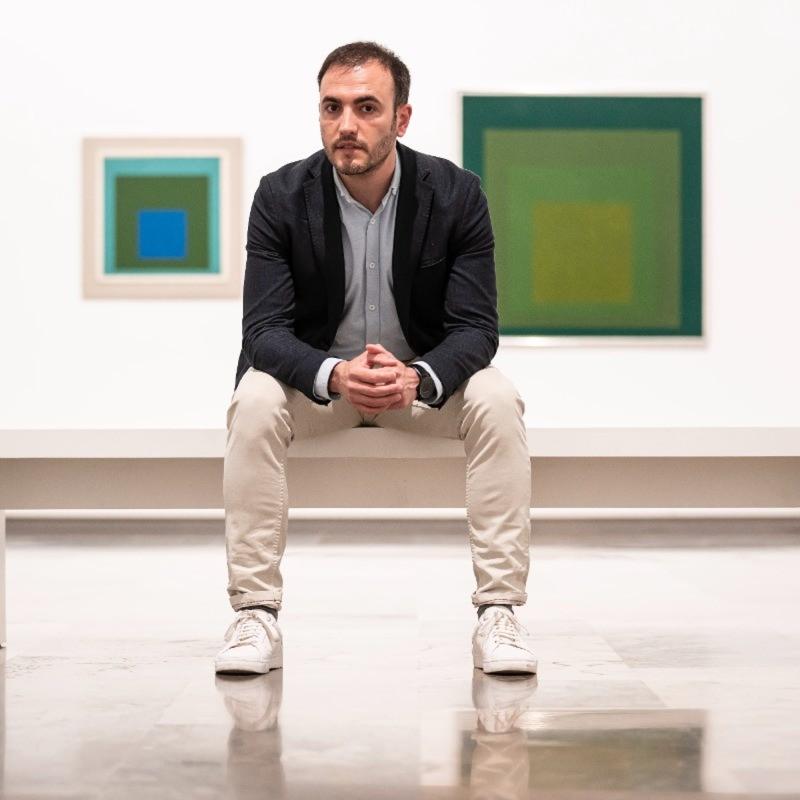From temples to commons: giving museums back to the people
Master of Public Policy (2015) alumnus Sergi Pérez reflects on how museums can evolve from exclusive cultural temples into civic spaces for inclusion, justice and sustainable development.

One of the first major challenges I faced as a manager of a cultural institution was organising the first joint exhibition of Josef and Anni Albers in Spain, in collaboration with the Museums of Paris. For those less familiar with the art scene, the ‘Albers’ are among the most influential artists of the twentieth century, so bringing together 350 works – valued at €83 million – and returning them to their owners afterwards was a logistically dizzying operation.
However, more than the logistics, our primary challenge was to take advantage of an exhibition of such significance to challenge our own institution, a rigid museum in which many communities and individuals did not feel included. People were left out – either because of a fear of not understanding what was being conveyed, or because the physical space that housed the institution was perceived as unwelcoming and distant.
We set ourselves the goal of doing everything within our power to ensure that those who, until then, had not yet entered our building would dare to do so and come to regard it as part of their natural habitat. For a museum is, above all, a civic space that transcends the exhibition of works of art: it can be a climate refuge, a place for learning, a place to study, or simply a place to be.
The team had to listen widely and re-imagine internal structures, open up spaces and formats, and rethink how we approached people and communities. Visitors increased organically, and the museum began to function less as a site for the passive reception of knowledge, and more as a space in which knowledge is experienced and co-produced in community.
Museums at a crossroads
Museums have shifted from being spaces of contemplation and temples of knowledge to being understood as instruments that can and should contribute to the improvement of our communities through their educational, emotional and symbolic dimensions. They also wield considerable power to influence change not only at the individual level but, above all, at the collective level in an increasingly polarised world.
This new paradigm brings up three main reflections for museums around the world: about their narratives, their governance, and the need to place increasingly diverse audiences at the centre of their practice.
Narratives
Museums shape narratives and collective identity; they tell stories about us and about our communities. As Alice Procter explains in ‘The Whole Picture’ and several other articles, the way these narratives are constructed is not neutral, especially in countries with a colonial past where some narratives have been privileged over others.
Experiences such as those of the American Indian Museum or the Museum of London show that there is another way of doing things when communities that have traditionally been marginalised in shaping the collective narrative – and the exhibition apparatus through which it is presented – are brought in as co-authors rather than mere consultees. This holds huge potential for restorative justice, to name just one benefit.
Governance
Another fundamental challenge lies in overhauling the rusty governance structures in which museums often operate. Many of our museums – and this is particularly notable among the most prominent – have programming and acquisitions policies tied too closely to personal visions: that of the incumbent director or a board that is not particularly diverse or inclusive. The challenge is to move from logics rooted in individual projects to stable frameworks oriented towards public interest, especially in publicly owned museums, which are the majority. This implies incorporating civil society into consultative and decision-making bodies, strengthening transparency and independent evaluation, and dignifying the working conditions of staff, with special attention to cultural mediation, which often occupies precarious positions despite its strategic role.
Audiences
While museums often aspire to educate and to establish inclusive narratives, everyday practices and visitor experiences frequently fail to match institutional rhetoric. This is particularly worrying in a context in which audiences have become the central axis of museum activity. Bridging this gap is essential, and to do so we must analyse and tackle, through the lens of public policy, the structural factors that produce disconnection between institutions and their audiences.
Museums must cease to be intimidating spaces for the poor and for minorities, insofar as access to culture is a human right. From this rights-based perspective, inequalities and the barriers that impede access must be dismantled.
Today, it is undeniable that income level, place of residence, gender, linguistic background, age and disability status produce patterns of exclusion that constrain people’s ability to exercise their cultural rights. In the UK, for example, museum attendance among those in higher managerial and professional positions can be more than twice that of the long-term unemployed, – and the barriers widen further when ethnicity is taken into account.
Museums’ ability to foster community bonds and shape identity means they can and should be key institutions in addressing these collective challenges – a role increasingly recognised in international cultural policy debates.
Culture for sustainable development
All of this will be on the table at MONDIACULT, UNESCO’s World Conference on Cultural Policies and Sustainable Development, taking place in Barcelona later this month.
Under the banner ‘Unleashing the Power of Culture for Sustainable Development’, the conference aims to catalyse the transformation of cultural institutions into engines of inclusive, place-based development that empower communities.
The conference will focus on advancing cultural rights, strengthening international solidarity and embedding culture at the heart of sustainable development. It will examine how culture can inform and influence policy in a turbulent global landscape – one in which the 2030 Agenda is under scrutiny and multilateralism is under strain. Discussions will focus on cultural rights, the challenges of AI, climate action, culture’s economic contribution and safeguarding heritage in times of crisis.
We must not forget those individuals and communities who, even today, do not set foot in museums, whether for fear from not understanding or from not experiencing them as their own spaces. Only then will we address the underlying causes of exclusion, and cultural rights will become a lived reality rather than mere rhetoric.

